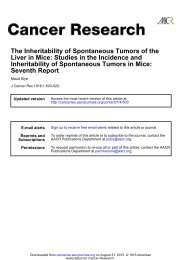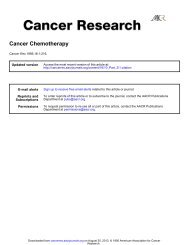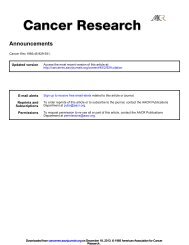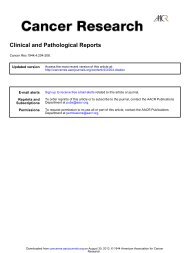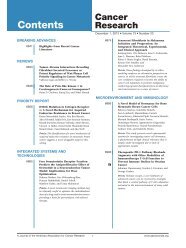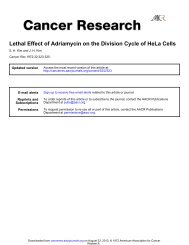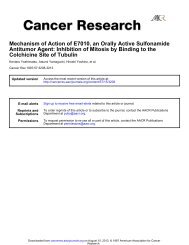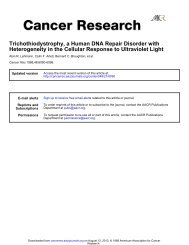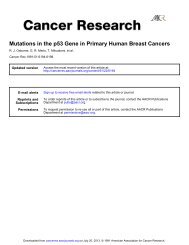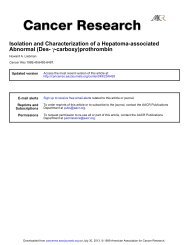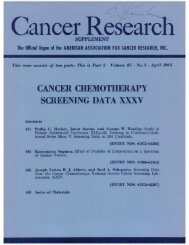MALIGNANT VARIANT OF CYSTOSARCOMA PHYLLODES ...
MALIGNANT VARIANT OF CYSTOSARCOMA PHYLLODES ...
MALIGNANT VARIANT OF CYSTOSARCOMA PHYLLODES ...
You also want an ePaper? Increase the reach of your titles
YUMPU automatically turns print PDFs into web optimized ePapers that Google loves.
<strong>MALIGNANT</strong> <strong>VARIANT</strong> <strong>OF</strong> <strong>CYSTOSARCOMA</strong> <strong>PHYLLODES</strong> 459<br />
and Silvan (10) have each reported a case in which a sarcomatous transition<br />
was observed. Pearce (7) followed the course of an intracanalicular fibroma<br />
through a phyllode stage to a fungating sinus with lancinating pain and<br />
cachexia. Prym (9) emphasized the presence of metastases. Poulsen (8)<br />
concludes that about 25 per cent are malignant.<br />
Despite the fact that local recurrences are common and that occasionally,<br />
at least, death results from lung involvement, it is an accepted belief that in<br />
general cystosarcoma phyllodes is a purely benign process. Practically every<br />
author who has written on the subject stresses the innocence of these tumors.<br />
Pathologists, however, no longer adhere to the conception that benign tumors<br />
metastasize but that a certain number recur locally after incomplete removal<br />
is well known.<br />
Although individual experience is limited by the paucity of these tumors,<br />
there is ample evidence, corroborated in the following case report, that a<br />
malignant form of cystosarcoma phyllodes actually exists.<br />
H. K., a single white female, aged thirty-four years, was referred by Dr. J. J. O'C.<br />
with a tumor in the left breast on Sept. 28, 1939. The family history was negative for<br />
cancer and the patient's health had been unusually good. Two years previously a tumor<br />
about the size of a hen's egg was accidentally discovered in the outer lower quadrant of the<br />
left breast. There was no history of local injury, pain, or discharge from the nipple. The<br />
menses had always been regular, painless, and normal. There was no history of pregnancy<br />
and, therefore, none of lactation. During the six months prior to admission the tumor had<br />
grown to eight or ten times the size of the normal breast. There was no weight loss, the<br />
strength was well maintained and the patient had continued at her employment.<br />
Physical examination was entirely negative except for the left breast. The latter pro-<br />
jected almost perpendicularly from the chest wall and extended from 1 cm. lateral to the<br />
right border of the ensiform to the left mid axillary line, and from the third interspace above<br />
to the level of the umbilicus (Fig. 1). The tumor was smooth in contour but irregular in




